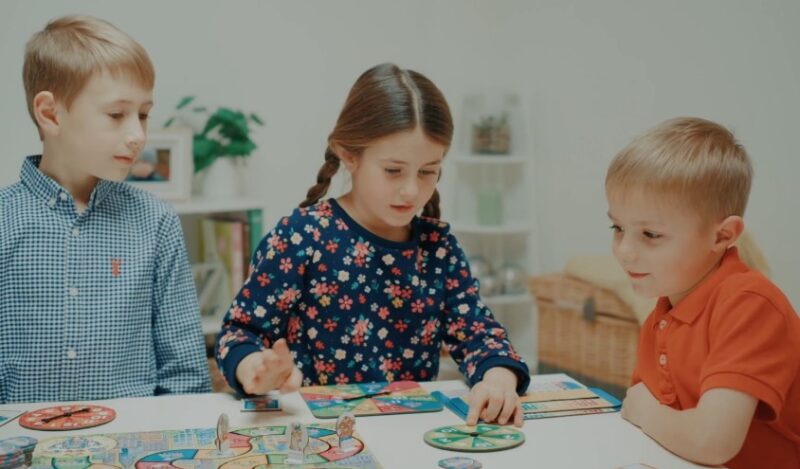
Share Post:
Mastering times tables is one of those key milestones in a child’s math journey that quietly powers everything else – fractions, long division, algebra, even geometry later on. But let’s be real. Sitting at the kitchen table, drilling 7×8 or 6×9 over and over doesn’t exactly spark joy for most kids or adults. That’s where games can work magic.
Games turn memorization into something engaging, active, even a little competitive. And the best part? You don’t need fancy tools, a math degree, or hours of prep. Just a few simple materials and the right mindset.
Here’s how to make times tables fun, memorable, and something your child actually wants to practice.
Table of Contents
ToggleOnline Games That Actually Work
Let’s start with online platforms, because they’re easy to access and usually pretty addictive (in a good way).
Timestables.co.uk
One standout is Times Tables Cat on Timestables.co.uk. Your child solves multiplication problems to help a cartoon cat hop between platforms and collect items. It’s a smart mix of repetition and reward.
What makes the site useful is the built-in progression:
- First, children view the table and say it aloud.
- Then they practice in order, drag-and-drop answers, answer multiple-choice questions, and finally tackle a timed quiz.
- At the end, they can earn a “little diploma” (30 questions) or a “big diploma” (40 questions), which makes the achievement feel official.
Set aside about 15 minutes daily. Encourage them to beat their own score or earn the next diploma, motivation matters.
EducationCity & PlayLive Multiplication
EducationCity takes a different approach. It combines songs, interactive tasks, and quick-hit quizzes.
Their PlayLive Multiplication game turns tables into a 60-second competition where kids race to answer as many questions as possible. Fast-paced, high energy, and it taps into that natural desire to win.
You can schedule this during screen time. It’s educational but doesn’t feel like “homework.”
Topmarks
On Topmarks, Hit the Button is a classic. Kids press the correct answer as fast as possible, improving both speed and accuracy. You’ll find versions for multiplication, division, doubles, and halves, so there’s room to grow.
Tip: Start with one table (like 2s or 5s), then gradually build up to mixed questions. Use a whiteboard nearby so they can jot down tricky ones.
Card Games That Build Speed Without Screens
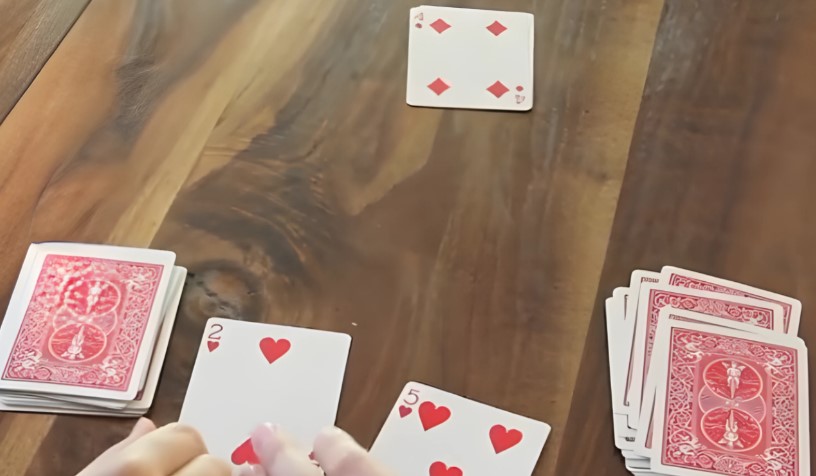
Sometimes, you just want to unplug. That’s where classic card games shine.
Multiplication War
All you need is a deck of cards, face cards removed. Each player flips two cards and multiplies them. The first to shout the correct product wins both cards. Whoever ends up with the most wins the round.
Let’s say your child draws a 4 and 6. If they shout “24” faster than you, they win the cards.
Play for 10–15 minutes. It’s fast-paced and builds mental math skills on the fly.
2 Times Table Dice Game
This one’s great for beginners. Write even numbers (4–24) on index cards. Roll two dice, add the numbers, then multiply by 2. Find the matching card. The player with the most cards at the end wins.
It reinforces one table at a time, perfect if they’re just starting out.
Games That Get Kids Moving
Sitting still isn’t for everyone. Some kids need to move to learn.
Times Tables Relay Race
Set up a simple relay: write multiplication problems on a whiteboard at one end of a room or yard. Divide into teams. Each player runs to the board, solves one problem, then runs back to tag the next player.
It’s loud, active, and surprisingly effective at building speed and focus.
Trashketball
Kids answer multiplication problems on a sheet or whiteboard. If they get it right, they crumple the paper and shoot it into a trashcan for points. You can make it more fun by offering different point values based on distance.
You get math, movement, and laughter all at once. If your child needs more structured guidance afterward, a maths tutor in Melbourne can follow up with targeted practice on those weaker tables.
Board and Dice Games for Strategy
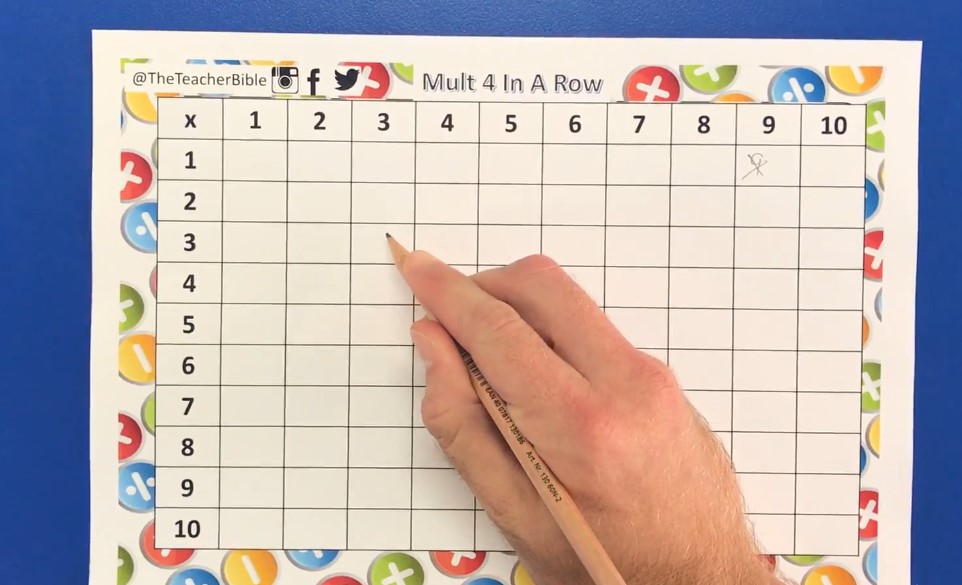
These games combine luck and thinking, a great combo.
4 in a Row Multiplication
Create a grid of products (e.g., 12, 16, 18, 24, 36…). Roll two dice, multiply the sum by a chosen number (say, 4), and cover that number on the board. The first to get four in a row wins.
It’s like Connect Four with multiplication, and it requires both speed and planning.
Roll and Write Fact Families
Roll two dice, write a multiplication fact (like 3×4=12), then write its division counterparts (12÷3=4, 12÷4=3). It reinforces how multiplication and division are connected, without making it feel like a lecture.
Music and Rhythm to Lock It In
If your child is the type who memorizes every lyric of their favorite song, this one’s for you.
Times Tables Songs
Platforms like EducationCity include themed songs for every times table. They’re catchy, easy to repeat, and surprisingly effective. Mr. DeMaio’s YouTube videos are another crowd favorite. He’s turned “Uptown Funk” into the 3x table. Kids love it, and it sticks.
Play them during breakfast, in the car, or while tidying up. Before you know it, they’ll be singing the 7s while brushing their teeth.
Clap and Count
You don’t need music, just rhythm. Clap or tap while reciting the table (e.g., “2, 4, 6, 8, 10…”). Add some fun by speeding up or switching the beat.
It works because it taps into auditory memory.
DIY and Creative Games Using What You Have
Sometimes the best tools are already in your junk drawer.
3D Models With Candy or Toys
Use stickers, Pop Its, Lego bricks, or candy to create groups. For example, three groups of four gummy bears equals 12. You’re helping your child see the multiplication in action.
It’s ideal for younger kids who need a hands-on approach.
Times Tables Scavenger Hunt
Write multiplication problems on small cards and hide them around the house. Have your child find and solve them, then record their answers on a sheet.
It adds a layer of adventure to what would otherwise be a worksheet.
Tips to Get the Most Out of Games
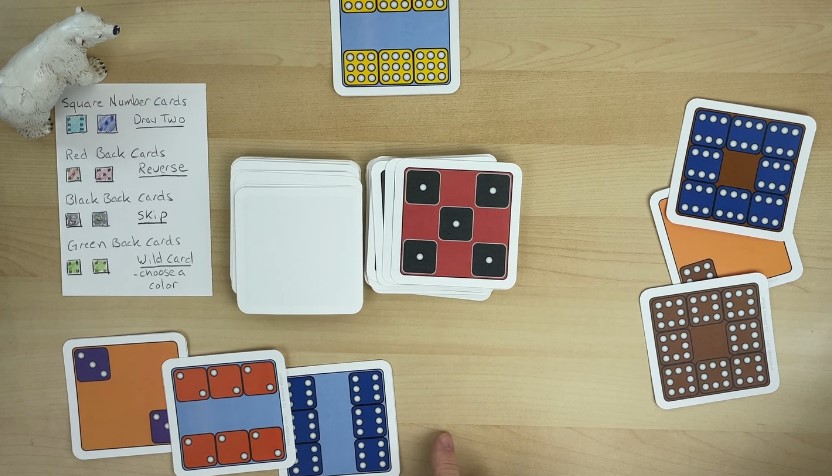
You don’t need to overhaul your entire schedule to make games work. Just keep a few things in mind:
Stick to a Daily Routine
Fifteen to twenty minutes a day is enough to build fluency. Consistency beats intensity.
Start Simple
Begin with tables that are easiest to memorize: 2s, 5s, and 10s. Once confidence grows, move on to 3s, 4s, and eventually the tricky 6s, 7s, 8s, and 9s.
Keep It Varied
Don’t play the same game every day. Mix it up. Try a card game one day, a song the next, and a relay race on the weekend.
Make It a Family Thing
Join in. Kids are more likely to engage if you’re playing too. Whether it’s Multiplication War or Trashketball, your participation adds energy and encouragement.
Celebrate Progress
Track progress with stickers, certificates, or even just a high five. EducationCity offers a SuccessTracker, but you can also create your own chart. Celebrate when a new table is mastered.
Use Shortcuts
Timestables.co.uk suggests putting the smaller number first (6×9 instead of 9×6), using known tables to help with harder ones (5×7 = 35, so 6×7 = 35 + 7), and looking for patterns (like all answers in the 5s table ending in 0 or 5).
Why Games Work So Well for Times Tables
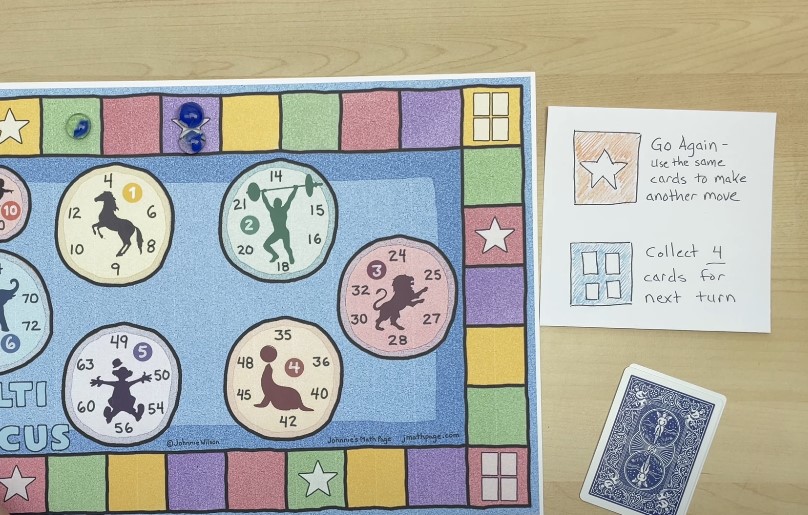
Games align with how children naturally learn, through repetition, feedback, and play. When kids are solving multiplication problems as part of a card battle or jumping a virtual cat across platforms, they’re not just memorizing; they’re processing, applying, and recalling in real time.
Children who played a math fluency game for just 20 minutes a day over two weeks made significantly more progress than those using traditional methods. They were recognizing patterns, getting immediate feedback, and reinforcing knowledge through consistent play.
What Research Says About Game-Based Learning
The results aren’t just anecdotal. A review from ResearchGate in 2025 found that game-based math learning improved performance and attitude. In particular, cooperative games boosted engagement, while solo games improved test scores.
Another study in the International Journal of Emerging Technologies in Learning showed that students using digital games slightly outperformed peers using traditional instruction.
And in that Frontiers in Education study, kids who played a multiplication game for two weeks improved their scores by over 10 points, equivalent to about seven months of progress. That’s not a small deal.
Final Thoughts
Teaching times tables doesn’t have to feel like a chore, for you or your child. With a mix of online games, hands-on activities, movement-based challenges, and musical memory tricks, you can turn math practice into something they’ll actually look forward to.
Keep sessions short, keep the games fresh, and keep the praise flowing. You’re not just helping them with math, you’re building confidence that will carry into every subject and every classroom.
And maybe even the grocery store, when they calculate the price of three packs of gum faster than you can reach for your calculator.
Related Posts:
- Why Math Matters in Everyday Life – Surprising Ways…
- 7 Simple Ways to Teach Counting at Home
- 9 Fun Math Games Inspired by Real Sports That Teach…
- How to Teach Addition to a 7-Year-Old – Games and…
- 10 Board Games That Teach Math Without Kids Realizing
- Top 9 Free Math Games Online That Actually Teach Something











